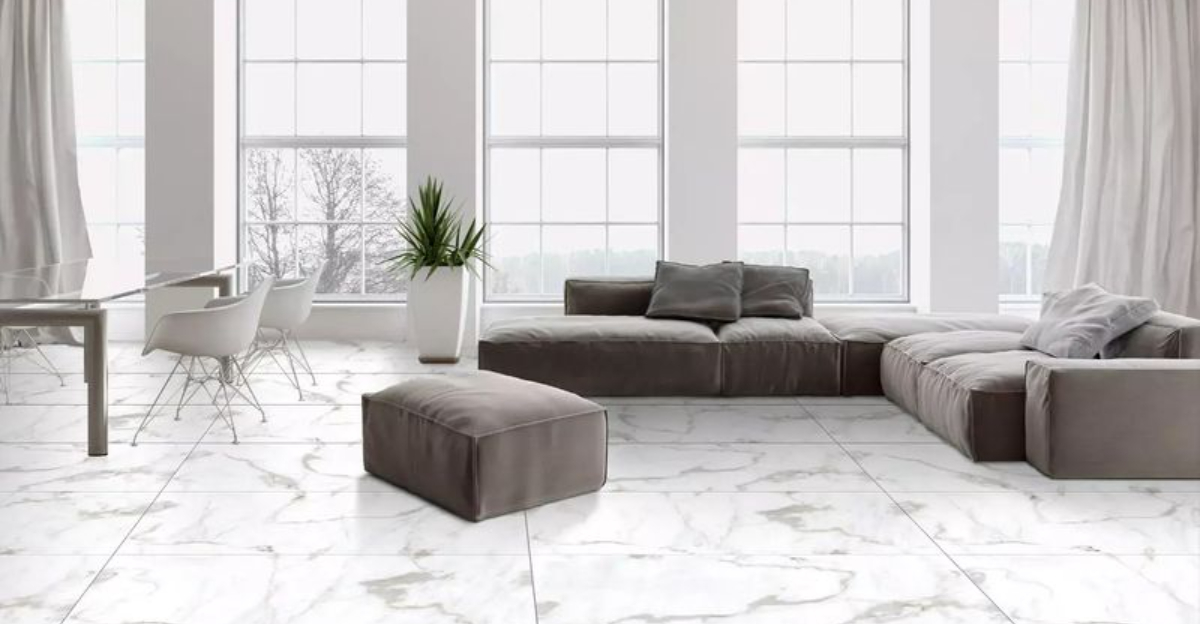Walking into a luxury home, one of the first things you notice is the stunning flooring beneath your feet. Those gleaming surfaces create an immediate impression of quality and sophistication.
While authentic marble, exotic hardwoods, and custom inlays come with steep price tags, savvy homeowners can achieve similar visual impact using strategic alternatives and installation techniques.
1. Go Wide With Engineered Planks
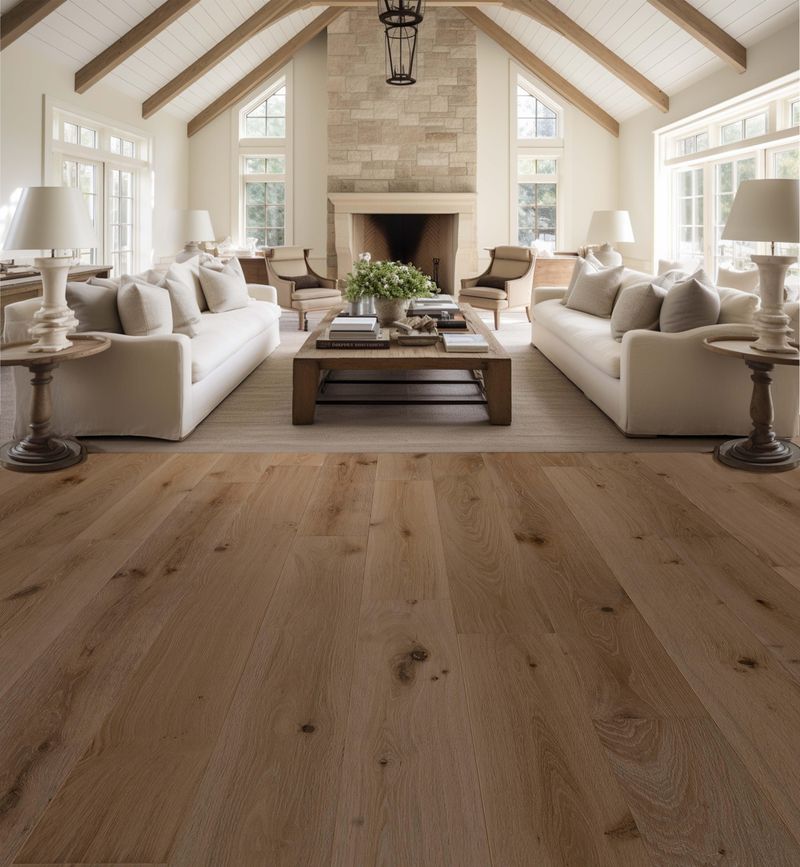
Wide-plank floors signal luxury because they showcase confidence in materials. Standard boards measure 2-3 inches, while upscale homes feature 7-10 inch planks that create fewer seams and visual interruptions.
Engineered versions deliver this expansive look without the warping concerns of solid hardwood. Choose matte finishes with subtle grain patterns rather than glossy surfaces that scream “manufactured.”
2. Lay Porcelain In Grand Formats
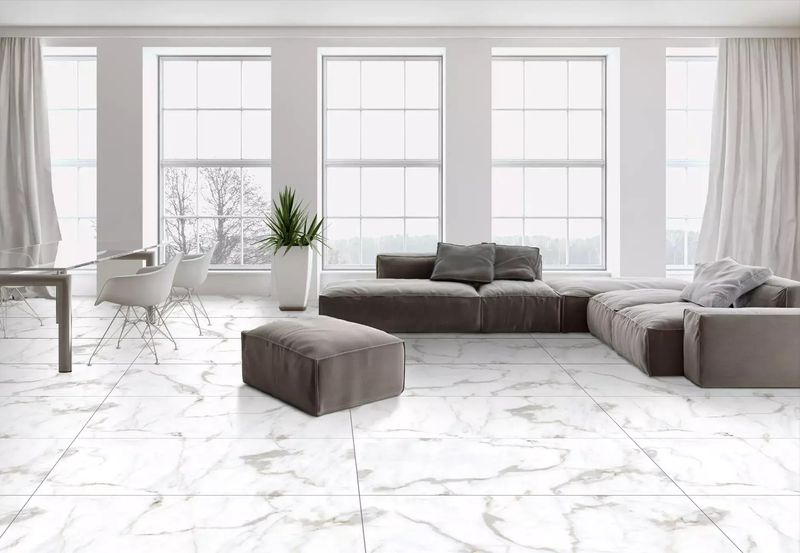
Massive porcelain tiles measuring 24×48 inches or larger create seamless, spa-like surfaces reminiscent of continuous stone slabs. Minimal grout lines amplify grandeur while eliminating visual choppiness common in standard 12×12 installations.
Modern porcelain technology perfectly mimics Calacatta marble, limestone, and even concrete at a fraction of genuine materials’ cost. Look for rectified edges—precisely cut tile perimeters allowing tighter installation.
3. Master The Herringbone Pattern
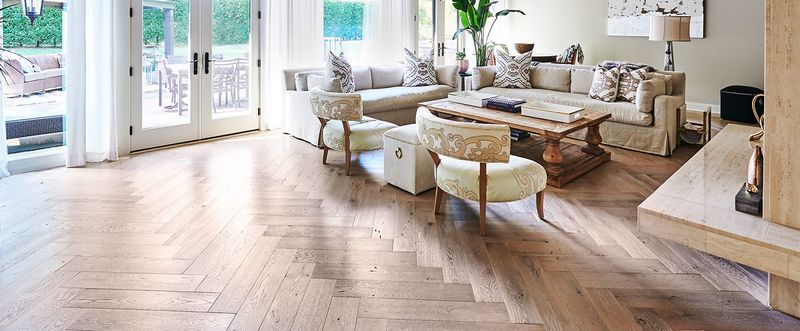
Herringbone installations transform ordinary materials into extraordinary statements. Short planks arranged in zigzag formations create movement and architectural interest seen in historic European estates.
Using affordable laminate or vinyl in this pattern elevates modest materials through craftsmanship rather than material cost. Consider lighter stains which highlight the geometric precision while making spaces feel larger.
4. Install Continuous Flooring Throughout
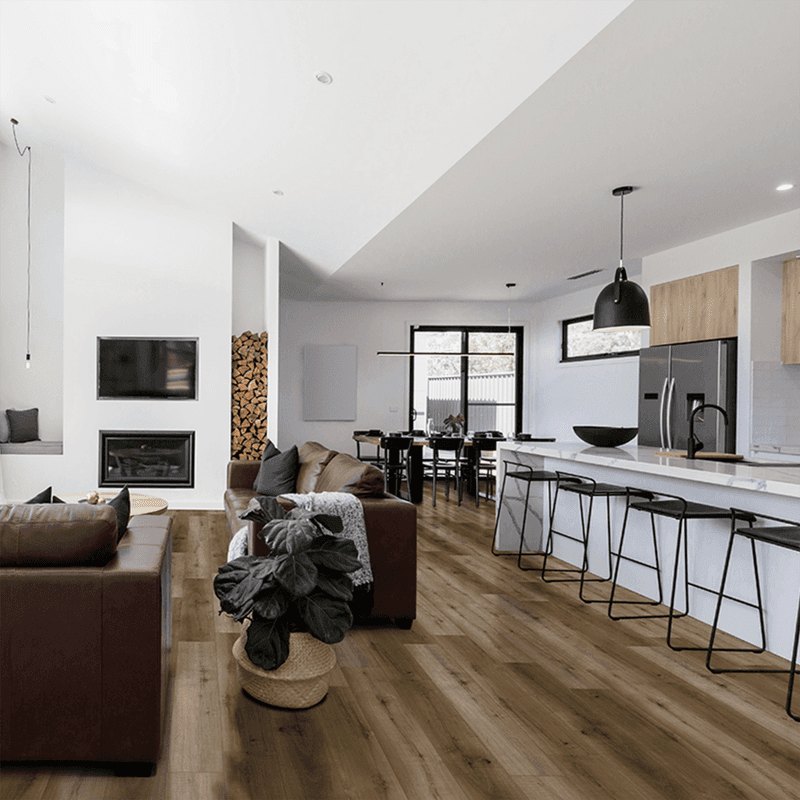
Flow creates luxury. Running identical flooring throughout main living areas eliminates choppy transitions between rooms, creating expansive visual continuity prized in high-end homes.
Avoid mixing different wood tones or materials between adjacent spaces. Select water-resistant options like luxury vinyl plank for seamless installation from entryways through kitchens. Uninterrupted surfaces make modest square footage feel dramatically larger.
5. Stain Existing Hardwoods Strategically
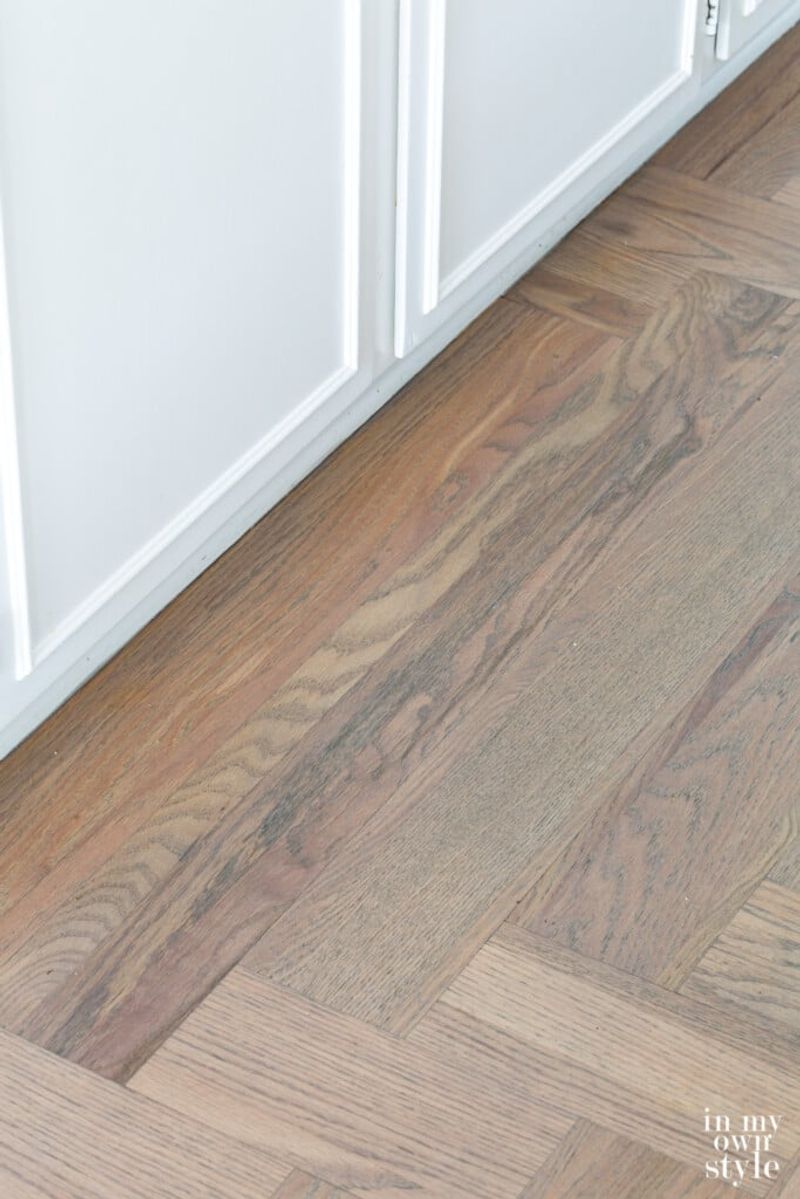
Refinishing existing floors costs a fraction of replacement while delivering dramatic transformation. Ultra-matte finishes mask imperfections while mimicking custom European oil treatments found in multi-million dollar residences.
Consider cool-toned grays, whitewashed effects, or rich walnut shades rather than outdated orange-toned stains. Modern luxury embraces subtle, sophisticated color palettes with minimal yellow undertones.
6. Upgrade Floor Transitions
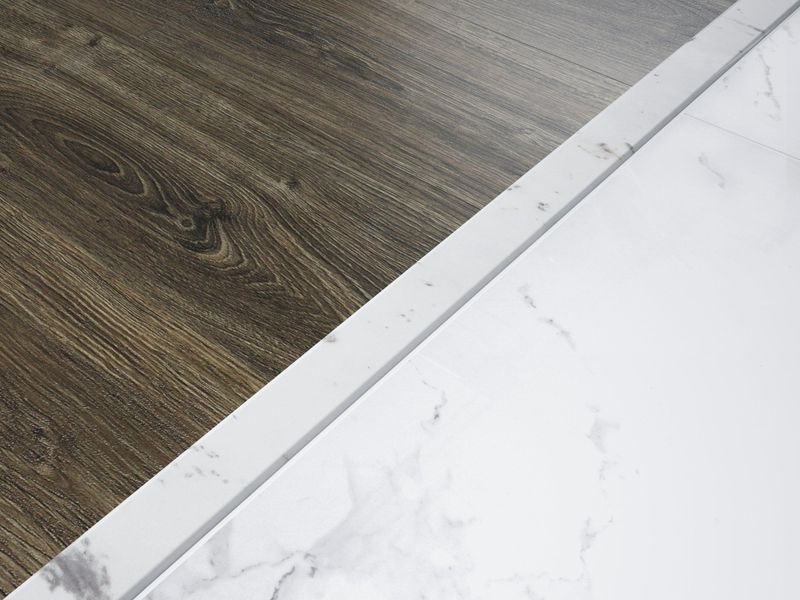
Luxury lies in details average eyes miss. Replace standard aluminum threshold strips with custom-cut material transitions matching your primary flooring. Marble saddles between bathrooms and hallways signal intentional design.
Flush transitions without height differences create seamless movement between spaces. Mitered corners at doorways showcase craftsmanship quality. Precision in transition areas elevates overall perception far beyond actual material cost.
7. Incorporate Decorative Border Inlays
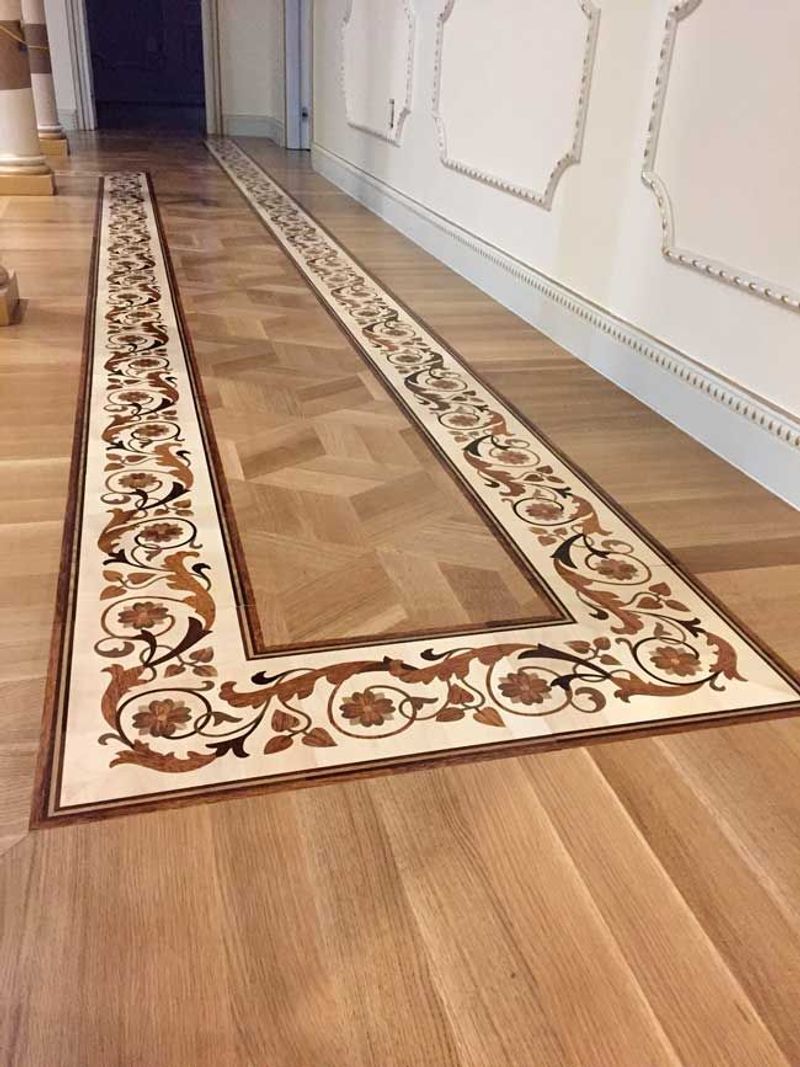
Border details instantly communicate custom installation. Simple contrasting wood strips creating perimeter frames around rooms transform ordinary floors into bespoke statements.
For maximum impact with minimal investment, focus border work in foyers or dining areas. Even modest materials gain presence through thoughtful design elements. Consider water-jet cut marble medallions for entryways—surprisingly affordable when limited to small focal areas.
8. Perfect Your Grout Game
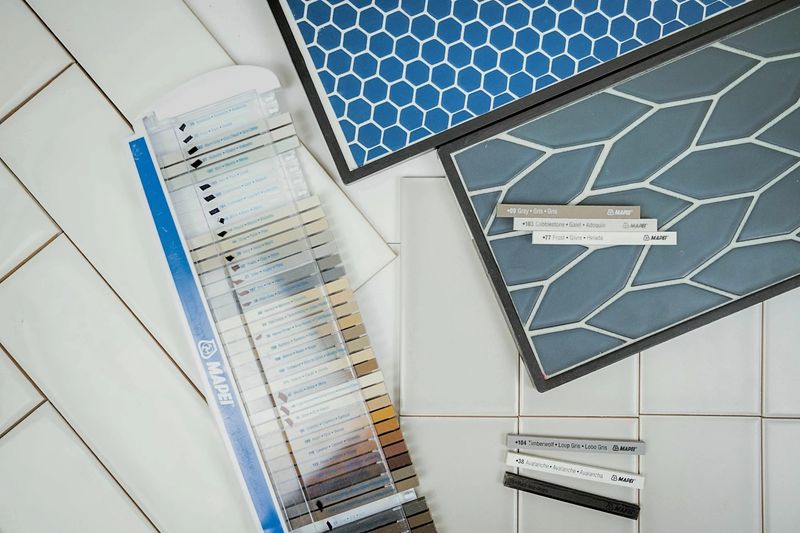
Luxury tile installations feature nearly invisible grout lines. Specify 1/16-inch spacing rather than standard 1/4-inch gaps when installing tile. Select color-matched grout blending seamlessly with tile rather than contrasting options that create visual grids.
Epoxy grouts resist staining and maintain consistent coloration unlike cement varieties that discolor unevenly. Small details like precise grout execution separate amateur from high-end installations regardless of tile cost.
9. Splurge On Flush Floor Vents
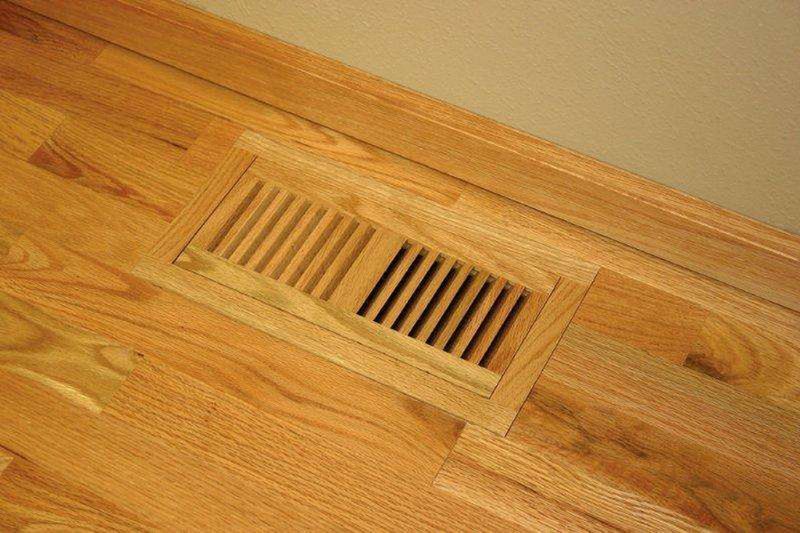
Metal register covers interrupt beautiful flooring with jarring industrial elements. Invest in flush-mount vents constructed from matching floor materials that disappear into overall surfaces.
Wood vents cut from actual flooring maintain continuous grain patterns. Tile inserts accept identical materials used in surrounding floors. Seemingly minor details like coordinated ventilation create subconscious impressions of cohesive luxury rather than disjointed construction.
10. Embrace Concrete With Upgrades
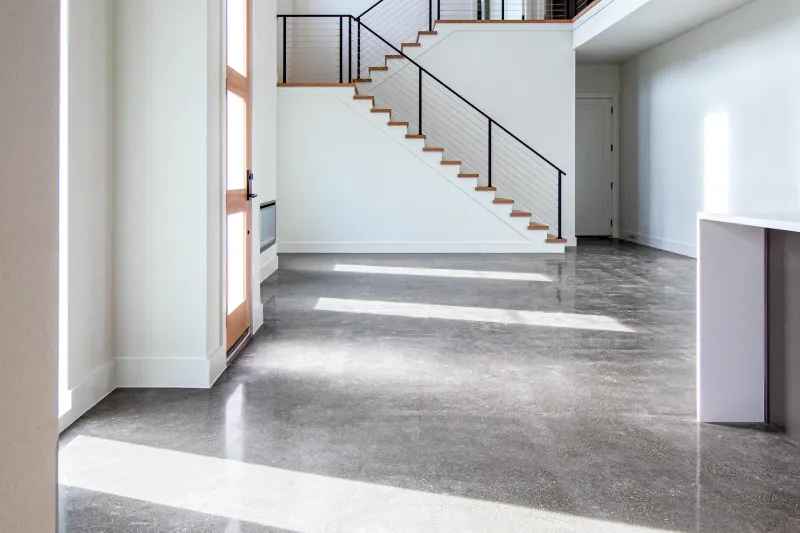
Polished concrete delivers industrial chic seen in high-end urban lofts and modern mansions. Upgrading basic concrete with micro-toppings, decorative scoring, or subtle metallic epoxy finishes elevates utilitarian material to designer status.
Consider hand-applied variations rather than uniform color. Matte sealers create sophisticated finishes compared to glossy coatings. Concrete offers massive visual impact per square foot compared to many conventional flooring options.
11. Layer With Strategic Area Rugs

Custom-cut area rugs define zones while protecting floors beneath. Unlike standard mass-produced sizes, tailored rugs precisely fit specific spaces with intentional borders showcasing surrounding flooring.
Position furniture entirely on or entirely off rugs rather than awkward half-arrangements. Leave consistent flooring margins around perimeters. Even modestly priced broadloom can be custom-bound into perfect dimensions mimicking expensive hand-knotted pieces.
12. Install Diagonal Patterns
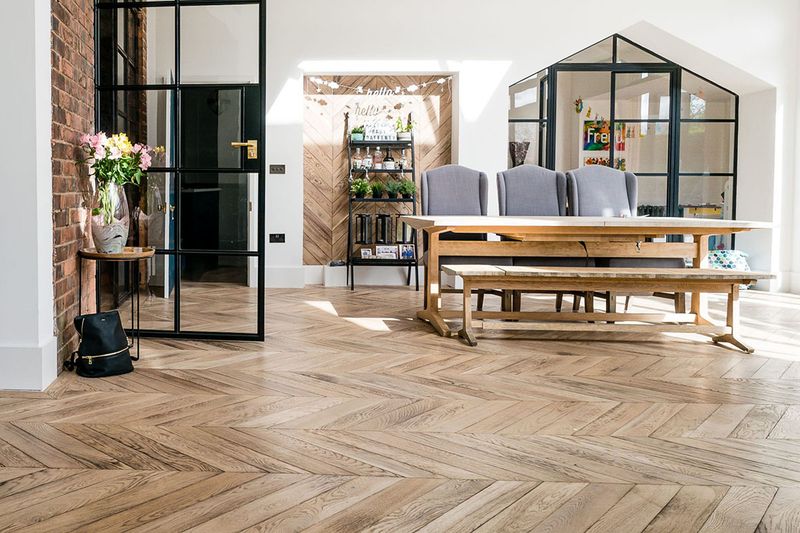
Diagonal installations instantly elevate ordinary materials through unexpected orientation. Setting standard wood planks or rectangular tiles at 45-degree angles creates dynamic movement and visual expansion.
Rooms instantly appear larger through diagonal sight lines extending to corners. Materials gain perceived value through installation technique rather than actual cost. Focus diagonal patterns in main living areas where angular energy creates maximum impact.
13. Undercut Door Casings Properly
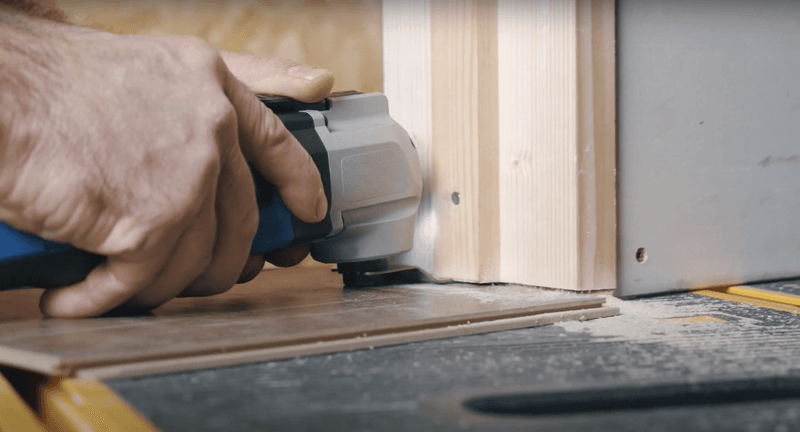
Professional installations feature flooring sliding seamlessly under door trim rather than awkwardly cut around casings. Undercutting wood trim allows perfect edges disappearing beneath architectural elements.
Small details telegraph installation quality regardless of material cost. Removing tiny sections of baseboard returns where they meet door casings creates crisp corners. Meticulous execution of transitions and termination points elevates modest materials to custom appearance.
14. Select Oversized Baseboards
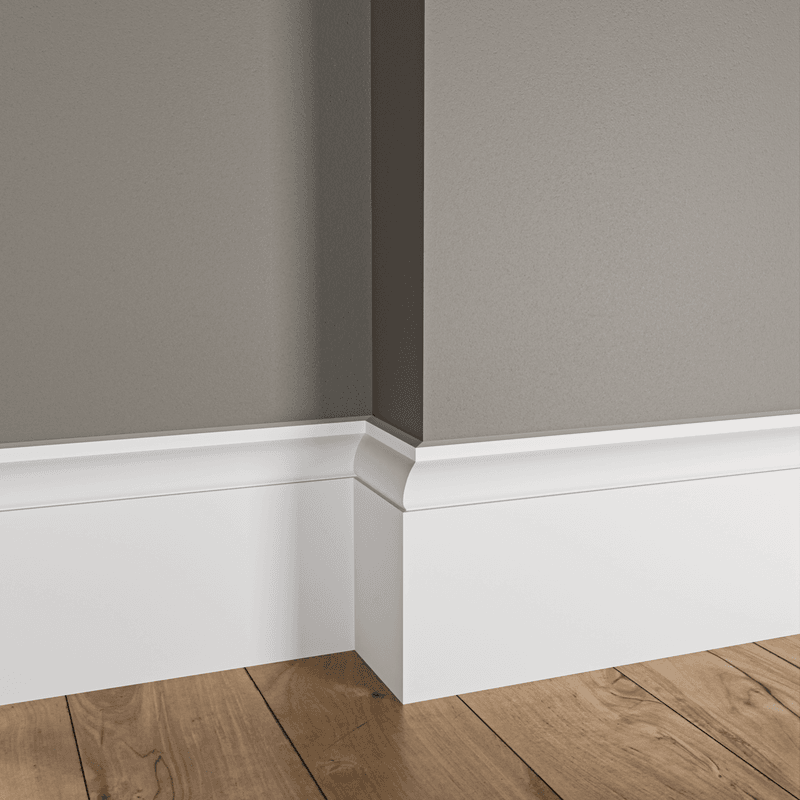
Standard 3-inch baseboards signal builder-grade finishes. Upgrading to 5-7 inch profiles creates architectural substance found in custom homes regardless of actual flooring material quality.
Consider simple profiles rather than ornate moldings for contemporary elegance. Paint baseboards identical colors as walls for seamless transitions. Proportional relationships between flooring and trim elements create cohesive design language that reads as intentional luxury.
15. Focus Investment On Focal Areas
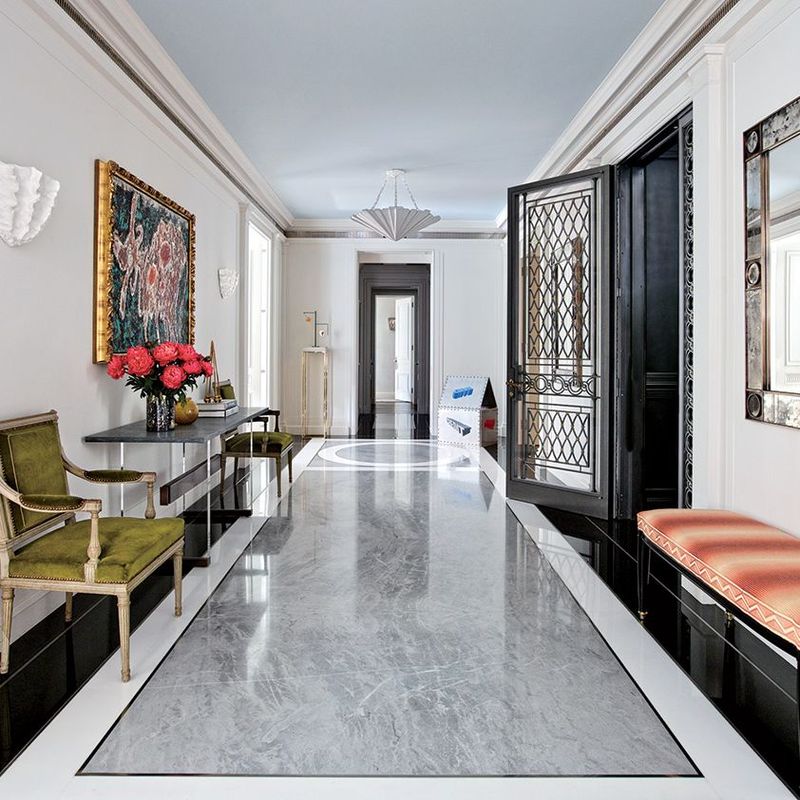
Strategic material allocation maximizes impact. Splurge on genuine materials in highly visible areas like entryways while using convincing lookalikes elsewhere.
Real marble tile in foyers creates powerful first impressions while economical porcelain continues in adjacent spaces. Bookmatched stone or exotic woods in dining rooms telegraph luxury without requiring whole-house installation. Perception of overall quality stems from key focal points.
16. Opt For Oversized Tile Patterns
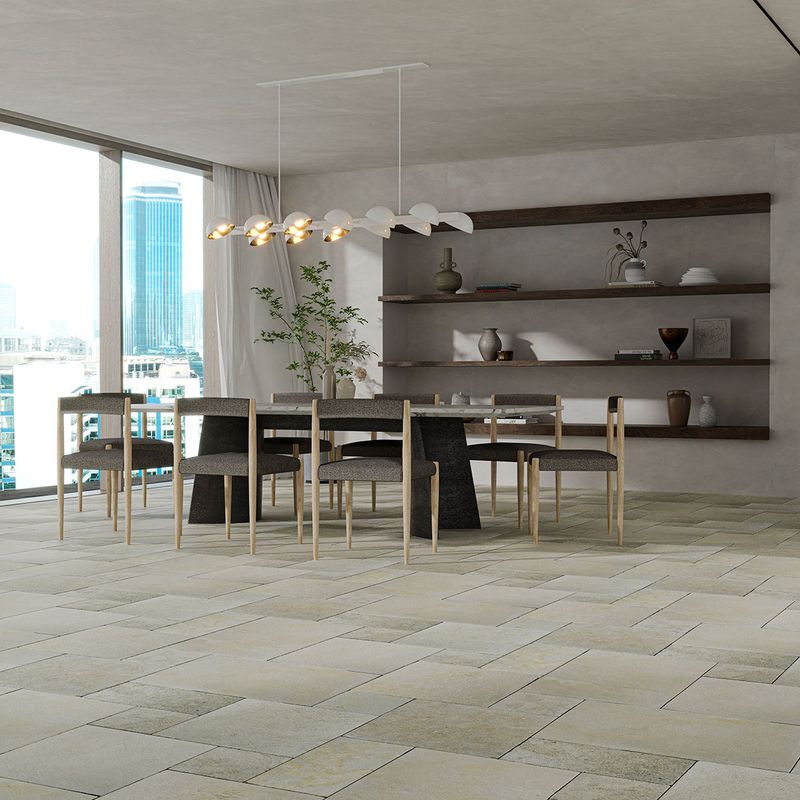
Versailles patterns feature multiple tile sizes arranged in repeating formations creating old-world elegance. Using porcelain or luxury vinyl in these arrangements delivers visual richness without stone prices.
Varied dimensions create sophisticated complexity compared to monotonous single-size installations. Consider subtle tone variations within neutral palettes rather than high-contrast combinations. Pattern complexity elevates modest materials through geometric interest rather than raw material cost.
17. Apply Color-Matching Magic
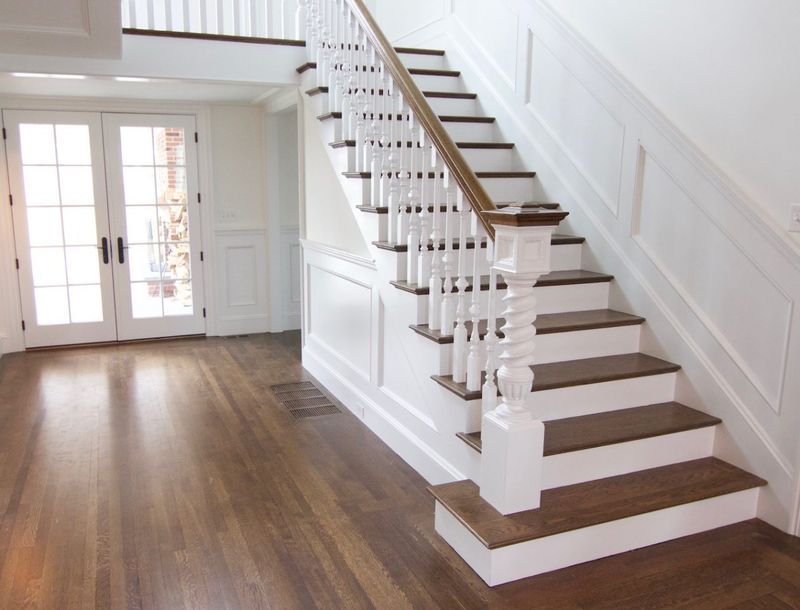
Luxury floors feature seamless color coordination between related elements. Match stain colors precisely between stairs, floors and handrails rather than approximate coordination.
Specify identical colorants for wood fillers repairing knots or gaps. Custom-tint caulk used along baseboards to exactly match flooring or grout colors. Meticulous color consistency creates cohesive visual flow that subconsciously registers as high-quality craftsmanship regardless of material price points.

